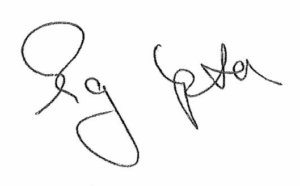- Home
- About AHP
- Publications
- Order Monographs
- White Mulberry Leaf Assessment
- COVID-19 White Paper Development
- AHP Monographs Under Development
- Botanical Pharmacognosy Textbook
- Cannabis, Seizures and Epilepsy: A Scientific Review
- Monograph Announcements
- Monograph Errata
- Monograph Prioritization
- Sample Monograph
- AHP Verified™ BRM
- HPTLC Association
- Services
- Join Us
- Contact
Cinnamon Bark Monograph and Therapeutic Compendium

- FUNDED $29,000
- NEEDED $26,932
- GOAL $55,932
- FUNDED 52%
Summary
Cinnamon is one of the most ancient herbs used by virtually all cultures who had access to it. In recent decades, interest in cinnamon focuses on its potential to support the regulation of blood sugar levels, specifically, its ability to increase the sensitivity of insulin receptor sites. Investigators at the United States Department of Agriculture (USDA) determined that an unidentified compound in the water-soluble fraction is associated with its effects.
This has led to a number of quality control issues related to this botanical. First and foremost is which species is (are) effective. The initial studies were conducted with Cinnamomoum cassia, now known by the new botanical nomenclature, Cinnamomum aromaticum. However, blood sugar-regulating effects of other species, including Cinnamomum tamala and C. verum (true cinnamon), have been found. Traditionally, the various species were similarly used, suggesting perhaps that differentiation between the species from a traditional use and blood-sugar regulating effect may not be needed, at least for these species.
One significant quality issue that has arisen regards the trade of water-soluble extracts prepared from the marc (pre-extracted) cinnamon. Essential oil from the bark is being extracted and sold to the flavor industry The left over dregs (marc) are then extracted in water to get “water-soluble” fractions, which are labeled as ‘cinnamon extract’, when in fact they really are an extract of pre-extracted cinnamon. Numerous water-soluble fractions can be altered or destroyed when extracting for essential oil, which usually utilizes a heat distillation process. Usually these extracts will not taste or smell like cinnamon because the aromatic compounds have been mostly removed. Although this is fraud and adulteration, standard tests may not pick it up.
Another issue in regards to safety are concerns that some species of cinnamon contain higher concentrations of coumarins than others. This requires that a comprehensive safety review of coumarins as they occur in natural products be undertaken. The European Union has adopted maximum allowable limits for coumarins in cinnamon botanical medicines. While concerns regarding the toxicity of these compounds in the amount delivered in standard doses may be exaggerated, a review of the traditional and scientific literature would be valuable in discerning which species are preferred or should be avoided.
It will take considerable expertise to tease out the specifics of these species, as well as to address the quality issues, analytics, and safety concerns; however, to do so will be of great benefit to everyone using cinnamon either as a spice or dietary supplement ingredient.
Sincerely,

Roy Upton, President
American Herbal Pharmacopoeia
Table of Contents
Nomenclature
- Botanical Nomenclature
- Botanical Family
- Pharmaceutical Nomenclature
- Definition
- Common Names
Identification
- Botanical Identification
- Macroscopic Identification
- Microscopic Identification
Constituents
Therapeutics
Pharmacokinetics
- Clinical Efficacy and Pharmacodynamics
- Actions
- Medical Indications Supported by Clinical Trials
- Medical Indications Supported by Traditional or Modern Experience
- Substantiation for Structure and Function Claims
- Dosages
International Status
History
Commercial Sources & Handling
- Collection
- Cultivation
- Handling and Processing
- Drying
- Storage
- Qualitative Differentiation
- Adulterants
- Preparations
- Environmental Sustainability
Analytical
- Thin Layer Chromatography (TLC/HPTLC)
- Quantitative Standards
Safety Profile
- Side Effects
- Contraindications
- Interactions
- Pregnancy, Mutagenicity, and Reproductive Toxicity
- Lactation
- Carcinogenicity
- Influence on Driving
- Precautions
- Overdose
- Treatment of Overdose
- Toxicology
- Classification of the American Herbal Products Association
References
Sponsor
Cinnamon Bark Monograph and Therapeutic Compendium
$200 of $55,932 raised
* Please note: The full sponsorship goal of the Cinnamon Bark Monograph and Therapeutic Compendium project is $55,932. If you would like to give the full sponsorship amount, please contact us and we’ll send you an invoice.
